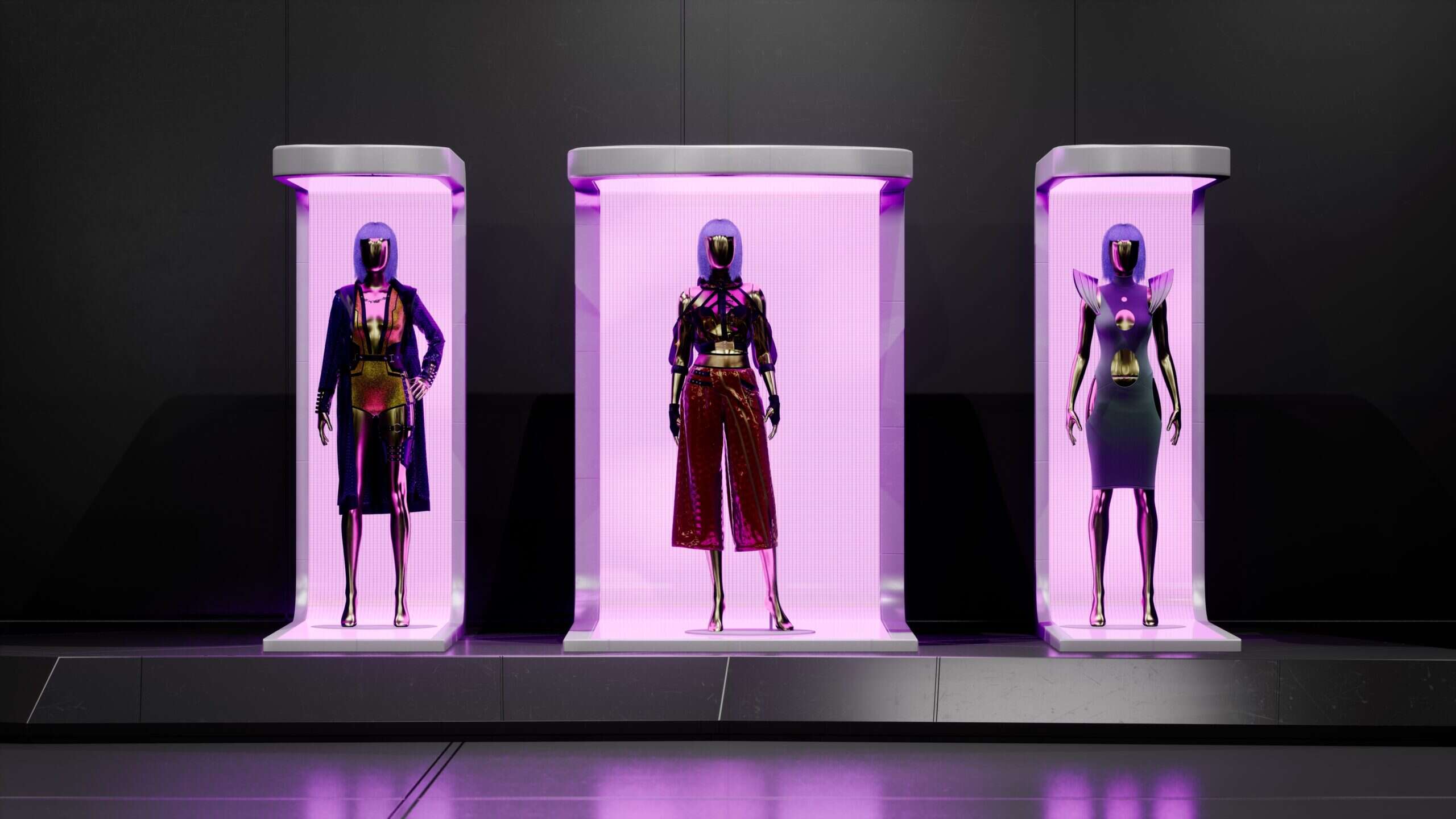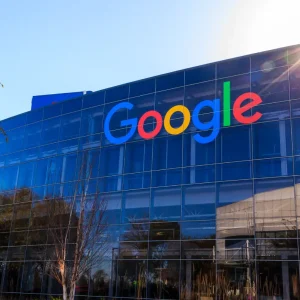
All eyes were on Bella Hadid yesterday as Paris Fashion Week approached its dizzying finale. Moments after the Lebanese model walked onto the runway, several assistants began spraying Hadid with a white, gelatinous liquid that wrapped around her skin like so much spider’s web. A few choice scissor-cuts later and the model was left wearing an entirely new dress – a demonstration, perhaps, that the future of couture probably resides inside the bottom of a spray can and not on the blockchain, as high-end brand Balmain hoped after launching its latest line of fashion NFTs at the Stade Jean Bouin six days previously.
Balmain is hardly alone in its enthusiastic embrace of Web3. Last year, the British luxury brand Burberry designed NFTs of digital vinyl toys tied to the Blankos Bloc Party Game, while Louis Vuitton released an entire video game stuffed with collectable NFTs, a third of which were designed by the field’s resident bad boy digital artist Beeple. Beyond gaming, last year Dolce & Gabbana created a nine-piece collection of NFTs that featured its couture designs where sales reportedly totalled $5.7m. Meanwhile, Hugo Boss recently announced a partnership with start-up Imaginary Ones to craft a ‘360-degree metaverse experience,’ set to drop this November.

Ironically, all of these fashion houses seem to be bucking the general trend in the NFT market – namely, that public interest in these crypto-creations is actually on the wane. While significant hype surrounded the market last year when Beeple sold an NFT at Christie’s auction house for $69.3m and NFT platform OpenSea reported more than $1bn in sales within seven months, that enthusiasm slowly ebbed away amid talk of inflated pricing, copyright infringement and a general malaise afflicting crypto thanks to mounting economic turmoil in the real world.
Even so, fashion industry experts remain confident that NFTs still represent an added value stream for their businesses and, as a result, are betting big on emerging virtual products. Despite their general decline in value, the market for NFTs is still awash with money. Indeed, mergers and acquisitions related to the metaverse have totalled an eye-watering $77bn in the past 18 months, as businesses race to cash in on a market some have projected to be worth $800bn in the next few years.
“This is fundamentally going to change digital ownership, creative structures, the creative economy, how we view money even,” said Karinna Nobbs, co-chief executive and chief experience officer of NFT marketplace The Dematerialised. “This is bigger than the internet.”
That sentiment was echoed by Robert Triefus, Gucci’s chief marketing officer, in a report recently published by McKinsey. “There are more and more ‘second worlds’ where you can express yourself [but] there is probably an underestimation of the value being attached to individuals who want to express themselves in a virtual world with a virtual product, [through] a virtual persona,” he said. Triefus also claimed that 19 million visitors came to the ‘Gucci Garden’ event last year within the Roblox gaming platform.
For his part, David Gerard questions how many transactions were actually made in the ‘Gucci Garden’ last year. The author and crypto sceptic argues that the majority of people who participated in the event were probably curious rather than willing to spend any real money in virtual worlds. “People look at things all the time, but what was the transaction volume? How much actual money or ether was spent?” says Gerard. “That’s the actual number you should care about. If there’s evidence of people spending money on this thing, they should be publishing the numbers for actual money being spent. The thing is that this hype is all seller-driven.”
Gucci did publicise at least one sale – that of a virtual handbag, which was eventually resold for the equivalent of $4,100 in (non-convertible) Roblox currency. There have been other notable fashion purchases in the NFT space, too, including a digital Hermès’ Birkin bag last year for $24,000. Even so, these seem to be the exceptions that prove the rule. Recent statistics published by DappRadar, a company which tracks NFT transactions globally, show that consumer interest is rapidly dwindling amid an uncertain economic environment, with trading volumes in the fashion market decreasing by as much as 87.5%, or $14m in value, compared to the second quarter of 2022.
“After the initial euphoria that accompanied their rapid surge in popularity, some began to doubt the long-term sustainability of these non-financial assets (NFAs) as their prices plummeted,” analysts wrote. “Unfortunately, this scenario unfolded due to several macro and micro circumstances, but principally to the recent sell-off in digital assets caused by the economic uncertainty.”
Despite these sobering figures, Gerard believes that the fashion industry will continue to push out NFTs as hype and trend cycles form a core part of its DNA, but draws a parallel to other industries eager to cash in early. “I wouldn't say it's any different to any other company trying to cash in on hype because it's the current trendy thing,” he says. “We went through this similar cycle in 2016 and 2017 with blockchain.”
Gerard also claims that the current hype surrounding NFTs in the fashion world is partly driven by analysts and consultants that have a vested interest in pushing out market reports that grossly inflate the value of emerging technologies. “It’s cheap to get someone to write a report looking into the blockchain and the metaverse, and hopefully there will be someone who understands that this is rubbish,” he says. “Just because you have foolish consultancies saying the metaverse will be worth billions in six months doesn’t mean it will.”
Homepage image by Flabygasted/Shutterstock






